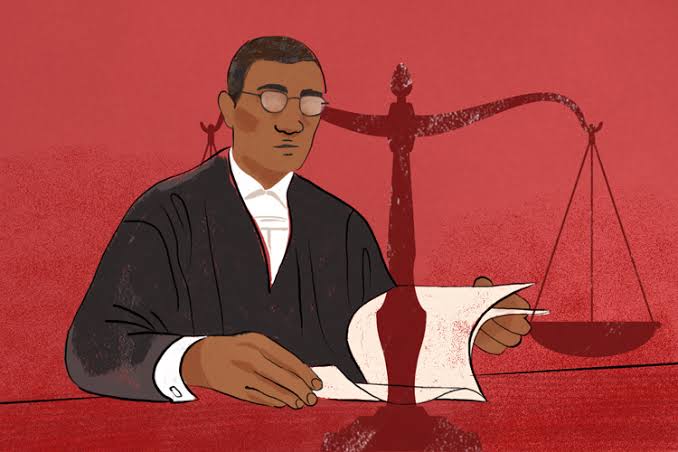Curbing Legal Overload

The Union government’s new effort to reduce unnecessary litigation is an overdue and welcome reform. The Directive for the Efficient and Effective Management of Litigation by Government of India, issued by the law ministry, is more than just bureaucratic housekeeping—it has the potential to transform the way the Indian state interacts with its citizens and businesses.
According to the Ministry of Law and Justice, the central and state governments together account for nearly 50% of all cases pending in Indian courts. In some jurisdictions, this share is even higher. For instance, in the Supreme Court, over 70% of appeals arise from litigation initiated by the government or appeals against government decisions. Across India’s subordinate courts, about 46 million cases remain pending, and estimates suggest that nearly 15 million involve the government as a party. This outsized presence in litigation has real consequences: it clogs the dockets, consumes public resources, delays justice for ordinary litigants, and erodes trust in governance.
The reasons for this problem are complex. One major factor is what experts call preventive litigation, where officials file appeals reflexively to avoid potential audit objections or allegations of corruption. As the Supreme Court has noted, many government appeals are not based on strong legal grounds but on a reluctance to take responsibility for decisions at the departmental level. Former Chief Justice of India T.S. Thakur famously called the government the biggest and compulsive litigant.
Data from the Department of Legal Affairs reveal that between 2017 and 2022, the central government spent over ₹5,500 crore in legal expenses, including fees to panel lawyers, court fees, and administrative costs. But that is only part of the cost: each case consumes precious judicial time, delays outcomes for citizens and businesses, and contributes to a climate of legal uncertainty. The Economic Survey 2017-18 noted that reducing government litigation by even 10% could save thousands of crores in direct costs and free up courts to focus on priority matters.
The new guidelines try to address this on several fronts. They mandate rigorous pre-litigation scrutiny of cases to avoid filing suits or appeals where the legal position is settled, accountability for panel lawyers who will be evaluated on the quality of their advice rather than just the volume of cases handled, time-bound decision-making requiring departments to decide within 60 days whether to pursue an appeal, and the promotion of mediation and settlements, especially in contractual and service matters.
Such measures are sensible and align with best practices in other countries. For example, the UK’s Crown Prosecution Service and the US Department of Justice have long-established internal review mechanisms before litigation is initiated. The Indian government’s attempt to create similar institutional discipline is overdue.
However, translating guidelines into reality requires more than policy pronouncements. Past initiatives, such as the National Litigation Policy of 2010, largely failed because they were not accompanied by incentives for compliance or penalties for non-compliance. Without robust monitoring, departments fell back into the default culture of “let the courts decide.”
If the government genuinely intends to bring down litigation, it must put in place three essential elements. First, transparent auditing and reporting. Every ministry should publish quarterly data on the number of new cases filed, cases settled or withdrawn, success rates in appeals, and legal expenses incurred. This would allow Parliament, the media, and civil society to hold departments accountable. Second, a change in incentives. At present, government lawyers and officials face little downside for pursuing weak cases. Panel lawyers often benefit financially from prolonging litigation. Instead, performance metrics should reward early resolution and penalize avoidable cases. Third, capacity building and preventive legal management. Many disputes arise from poor contract drafting, ambiguous regulations, or inconsistent enforcement. Specialized training for officials in preventive lawyering and dispute avoidance will help reduce the flow of cases. The introduction of dedicated in-house legal cells in ministries could ensure better scrutiny before suits are filed.
India’s economic aspirations also depend on reducing the legal risks of doing business. According to the World Bank’s Doing Business Report, contract enforcement in India takes an average of 1,445 days, among the slowest in the world. The uncertainty of prolonged government litigation is a deterrent for domestic and foreign investors alike. A predictable, less adversarial approach can significantly improve India’s investment climate.
Finally, it is important to remember that justice delayed is justice denied—not only for those entangled in disputes with the state but also for countless citizens whose cases are held up because of the government’s litigious inertia. The new directive is a chance to finally change this status quo. But the burden of success lies squarely on sustained political commitment, robust monitoring, and a willingness to hold departments to account. If the Union government sees this through, it will not just ease the load on courts—it will set an example of governance that is more efficient, responsive, and citizen-centric.
India deserves a government that litigates only when necessary, not by default. This reform could be the first real step toward that goal.
(Author, a JNU PhD, is a practising lawyer.)

 23 hours ago
23 hours ago





[[comment.comment_text]]